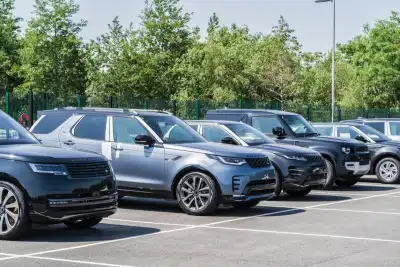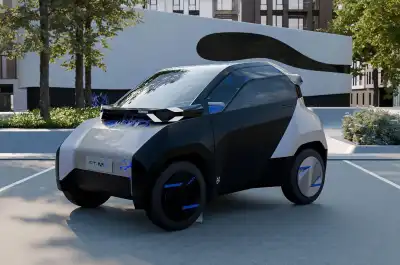The FIA announced the new 2026 chassis rules on yesterday (June, 6th 2024), right before this weekend's Canadian Grand Prix. While changes to the engines were known for two years, this is the first confirmation of the updated chassis regulations.
Here's a breakdown of the new car rules:
- Minimum weight reduced by 30kg to 768kg
- Width reduced by 10cm to 190cm
- Narrower front and rear tires, while keeping 18-inch wheels
- Active aerodynamics to cut drag on straights and optimize the new engines
- A revised floor design to limit underbody aerodynamic 'ground effect,' reducing the need for cars to be extremely stiff and low
Haas driver Nico Hulkenberg mentioned that these new cars will have "a lot less downforce, especially in high-speed corners."
Some criticise the introduction of active aerodynamics as overly complex, but they're necessary to reduce drag and increase braking distances. This helps recover enough energy during braking to power the significantly larger electrical component of the new engines.
FIA single-seater technical director Jan Monchaux explained "The DRS on the rear wing will not be used to facilitate overtaking any more. It will be used by default on every straight by every car to drop drag levels, because this comes with some strong benefits for energy consumption.
"But also having higher top speed allows you to recover more [energy] when you're braking at the end of the straight."
Regarding the new overtaking boost system, Monchaux said drivers can use more electrical energy than their opponent if they are within a certain distance of the car ahead before the end of a lap.
Changes to the Engines:
The new engines, less efficient than existing ones due to the removal of the Motor Generator Unit-Heat (MGU-H), require moveable aerodynamics to recover enough energy for increased electrical power. The electrical power from the engine will increase from 120kW to 350kW.
Despite the removal of the MGU-H, the engines will still be 1.6-litre V6 turbo hybrids, with the key addition of 100% sustainable fuel. These fuels only emit the carbon dioxide that was originally captured to produce them. A study by Prof. Felix Leach at Oxford University, funded by F1, showed these fuels could cut life-cycle CO2 emissions by more than 90% compared to fossil fuels.
These sustainable fuels can be used in almost any internal combustion engine. To ensure their credibility, the FIA will introduce a scheme to check the source of all components used by fuel suppliers.
F1 chairman Stefano Domenicali stated, "The new sustainably fuelled hybrid power unit presents a huge opportunity for the global automotive industry. The drop-in fuel has the potential to be used by cars around the world and dramatically cut emissions."
Driver Reactions:
Lewis Hamilton has raised doubts about Formula 1's new rules, questioning if they're the "right direction," though he acknowledged that the new engines are a "bold step."
The FIA plans to make cars smaller, nimbler, and more eco-friendly starting in 2026. The new cars will be 30kg lighter, 10cm narrower, and will feature engines with a near 50-50 split between electric and internal combustion power, running on fully sustainable fuels.
Hamilton, who has advocated for lighter cars, said, "It’s only 30kg so it’s going in the right direction but they’re still heavy.
"I have spoken to some drivers who have driven it on the simulator - I haven’t - and they said it’s pretty slow so we will see if it’s the right direction or not.
"But in terms of sustainability, particularly on the power-unit side, that’s a really bold step and it’s going in the right direction.
"We have just got to make sure the cars are efficient, fast and a step forwards and actually racing is improved."
The FIA described the core idea of the 2026 rules as creating a "nimble car." Active aerodynamics will optimise engine performance, with front and rear wings opening on straights to reduce drag and boost speed, and closing for increased downforce during cornering. Overtaking will be aided by a power-boost system for following cars, replacing the current DRS (drag-reduction system).
The new hybrid engines, which triple the electrical power used, have attracted new manufacturers like Audi and Ford to F1 and convinced Honda to stay. Along with Mercedes, Ferrari, Renault, and the new Red Bull Powertrains company partnering with Ford, there will be six engine manufacturers in F1 by 2026.
FIA president Mohammed Ben Sulayem said, "The key features of the 2026 regulations are advanced, sustainable technology and safety.
"Our aim, together with F1, was to produce a car that was right for the future of the sport's elite category. We believe we have achieved that goal."
These rules are part of F1's commitment to go net-zero carbon by 2030.
McLaren's Lando Norris expressed concern that such a major rule change could make the field less competitive just as it was starting to close up.
“There is going to be another change just as the sport gets exciting again," Norris said. "I guess there are reasons for it but I don’t want it to go the opposite way. Especially with how complicated it is.
"You could have massive gaps and then people are going to say it’s boring again. Right now it is as exciting as it has been for a very long time.”




